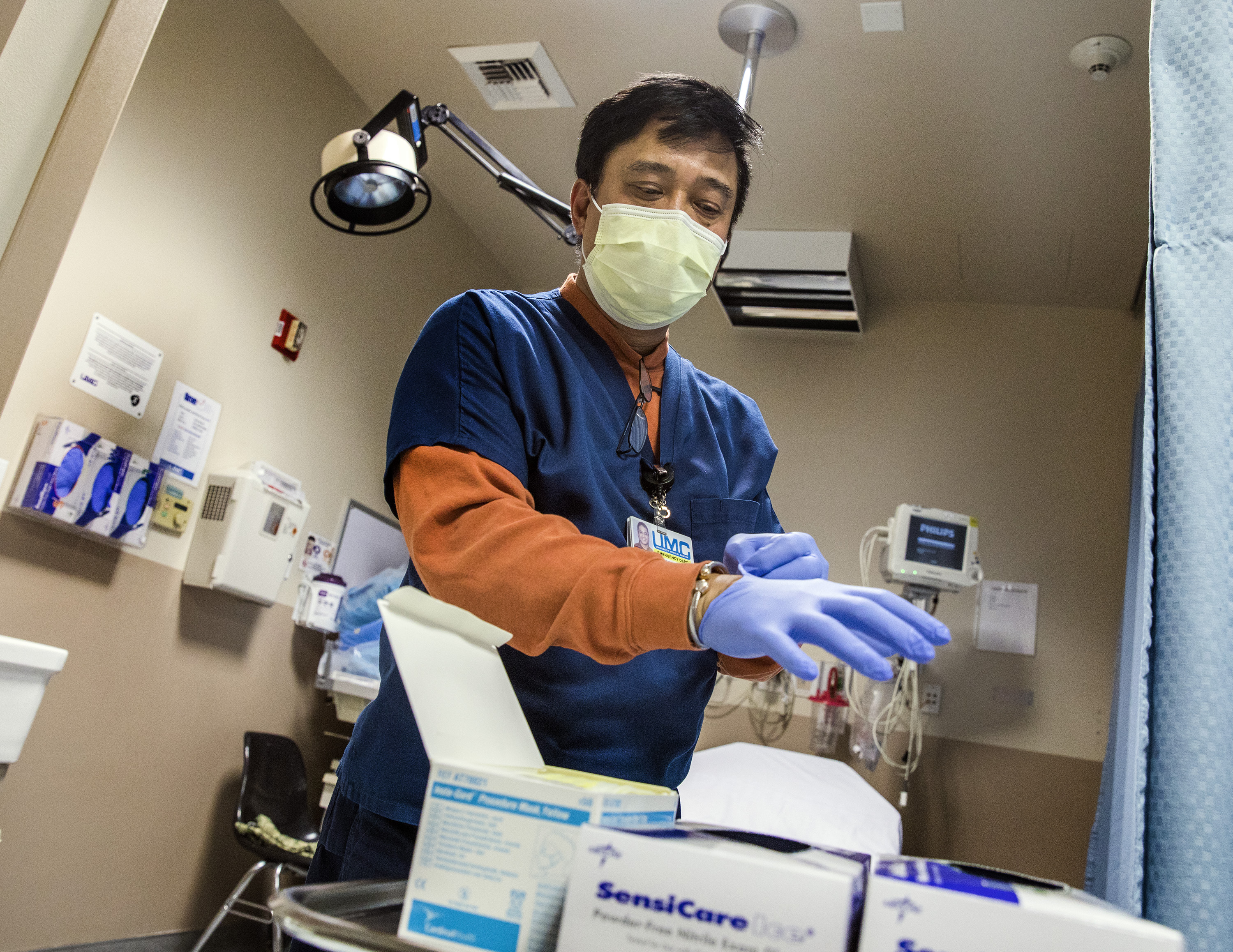Flu season in Nevada is more severe than usual, but not as bad as California

Flu season has hit Nevada hard this year, although health officials say it’s not quite as bad as what neighboring Southern California has seen with hospitals reportedly coping with a “war zone” of flu patients.
The culprit for the particularly acute flu season across the country is a strain of influenza known as H3N2, which tends to be associated with more complications and more deaths than the other influenza A virus, H1N1, and influenza B viruses. To top it off, the flu season started earlier this year than usual and H3N2 is difficult to prevent with the flu vaccine, partly because of how fast it mutates.
So far, there have been 14 deaths and 567 hospitalizations in Clark County this season, with another seven deaths and 331 hospitalizations in Washoe County. That’s worse than what Nevada saw in the previous two flu seasons, though state epidemiologist Dr. Izhan Azzam noted that those seasons were particularly mild.
“We tend to forget that the pandemic flu or the seasonal flu arrives every year,” Azzam said. “From time to time it’s more severe than usual.”
The Centers for Disease Control and Prevention has reported widespread influenza activity in 49 states, including Nevada, earlier this month. Flu-related hospitalizations increased to 22.7 per 100,000 people for the week that ended Jan. 6, according to the CDC’s tracking network. The rate for the week prior was 13.7 per 100,000 people.
By comparison, the overall hospitalization rate for the 2014-2015 flu season, which was considered one of the most severe, was 29.9 per 100,000 people. CDC officials already have labeled this year’s flu season as severe, but exactly how severe remains to be seen.
Flu season typically starts in the fall and peaks in January or February before fading in the springtime. But this year it started earlier, and state officials aren’t quite sure if it’s peaked yet or there’s more still to come after they saw a slight reduction last week.
“What we could say is that this week we are not worse than the previous week,” Azzam said. “That is telling me that probably we had the past-holiday peak, that we peaked. But again, there are so many things which could be done if things start to be worse.”
One option for mitigating a worsening flu season includes having providers prescribe antiviral medications to those who have severe flu cases or are high-risk patients for the flu, such as the elderly or immuno-compromised. As in California, hospitals could also set up tents outside of their emergency departments to deal with an overwhelming number of flu patients. In the event of an unusually severe flu season, health district officials could even recommend or mandate closure of schools.
The CDC reported 20 pediatric deaths related to the flu through the first week of January. Two of those children died in Clark County, according to data from the Southern Nevada Health District. One was younger than 5 years old, and the other was between the ages of 5 and 17.
The Clark County School District, however, has not seen large numbers of students missing or leaving school early because of flu symptoms. Lynn Row, the director of health services, described the flu activity as “normal” for this time of year — no unusual clusters or widespread absences.
“We’ve been trudging along with getting kids home if they need to be home and keeping them home if they need to stay home,” she said.
Still, the school district — which educates 320,000-some students — is urging parents to keep sick children home for 24 hours after their fever has gone away. Influenza is an airborne illness that spreads easily from coughing and sneezing, meaning, despite custodians’ best efforts to sanitize desks and classroom materials, the odds of sick students infecting others is high.
School officials will continue monitoring flu activity as the season progresses and passing along relevant information to the health district. But unless unforeseen circumstances arise, don’t expect any flu-related school closures. Row said she can’t recall a time when the district canceled classes because of the flu.
For now, state and local health officials and the school district are urging everyone to practice good hygiene habits, such as coughing and sneezing into your sleeve and if you have to use a tissue, throw it away and then wash your hands with soap and water. Officials are also urging that it isn’t too late to get to flu vaccine and that some vaccine is better than no vaccine.
“For some people, (the vaccine) might be the difference between being at home for a few days and being hospitalized,” said Heidi Parker, executive director of Immunize Nevada. “It helps protect the community and those around you who might be more vulnerable to the flu.”
The flu vaccine is free with all insurance plans under the Affordable Care Act. Those without insurance can obtain the vaccine from health districts, community health nurses and federally qualified health centers.
“That’s a message we’ve started using this flu season as well to remind people that if they do have health plan coverage — if they have Medicaid or Medicare — it is a zero cost. There is no copay,” Parker said. “Not everybody understands how to use their coverage.”

